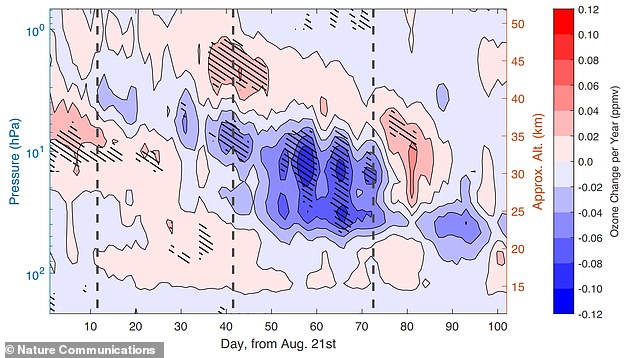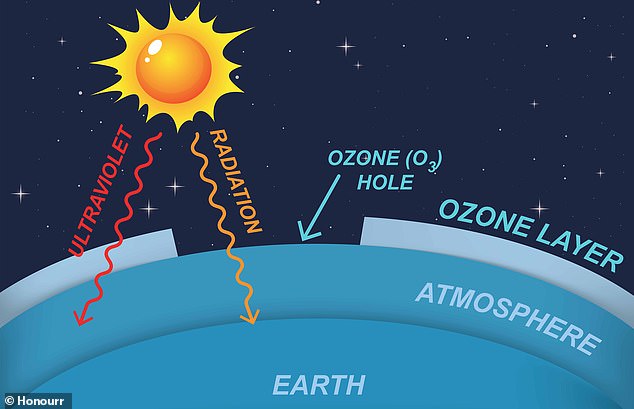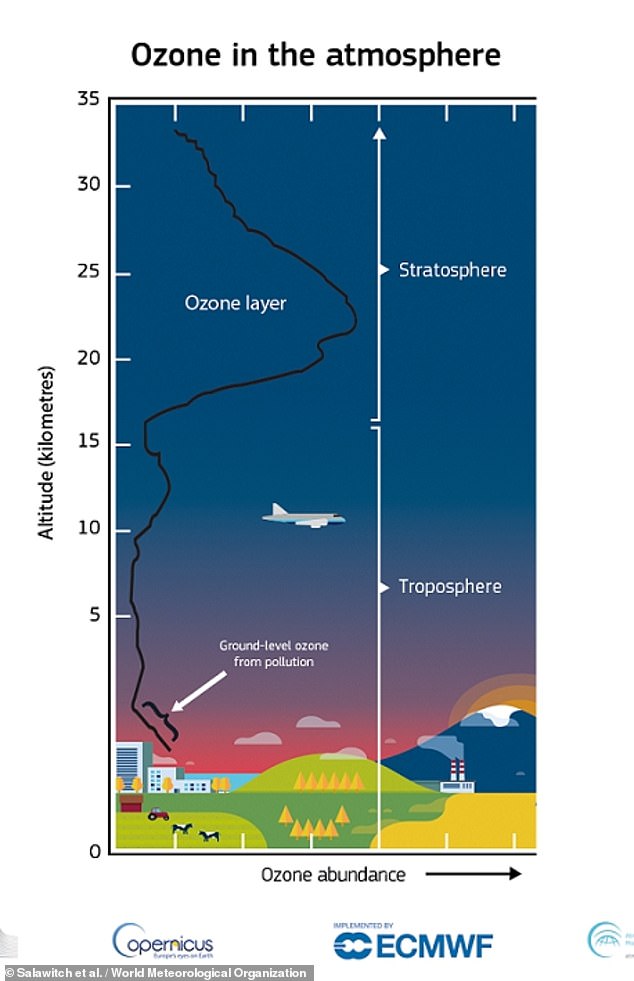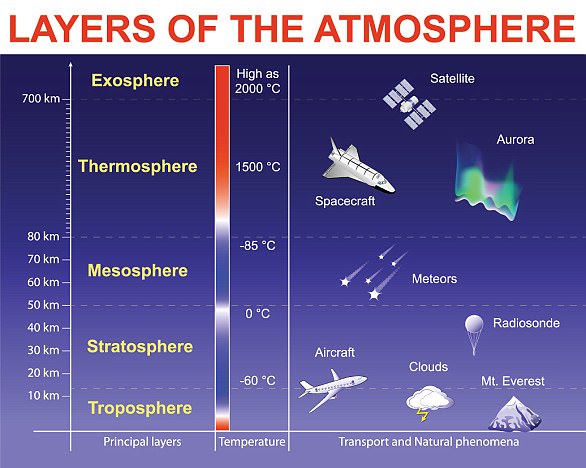Ozone Hole has been ‘remarkably massive’ over the past four years: Scientists warn gap over Antarctica is larger and deeper than ever – and say CFCs aren’t the only things to blame
>
Nearly 36 years ago, experts agreed to ban the production of a harmful class of man-made chemicals, known as CFCs.
At the time, research showed that CFCs depleted the ozone layer, the protective layer of our atmosphere that protects us from cancer-causing ultraviolet rays.
But that may not be enough, as the ozone hole has been “remarkably large” over the past four years, scientists in New Zealand now reveal.
Experts analyzed monthly and daily changes in ozone, at different altitudes and latitudes inside the ozone hole, from 2004 to 2022.
They found that there is much less ozone at the center of the ozone hole than there was 19 years ago, despite the crackdown on CFC production that began in the 1980s.
Researchers in New Zealand report that the ozone hole has been remarkably large and long-lasting over the past four years. Pictured is the ozone hole recorded on October 3, 2022

The size of the ozone hole fluctuates regularly but peaks in October each year (southern hemisphere spring). Pictured is the hole that appears during this time, indicated in blue
As of September, the ozone hole was 10.3 million square miles (26 million square kilometers) in size, experts recently revealed, but they weren’t sure why it was so big.
A UN report earlier this year claimed the ozone layer could be repaired by 2040 due to a ban on CFCs, but recent measurements of the hole have cast doubt on the issue.
The authors of this new study claim that there has been a 26% loss in the core of the ozone hole in the past 19 years, but again, they are not sure why.
Experts compared ozone hole measurements made since 2004 to the month of October.
October is spring in the Southern Hemisphere, and is usually when the hole reaches its maximum size.
“The hole was among the largest recorded over the past three years,” said study author Hannah Kesenich from the University of Otago.
Our analysis ended with data from 2022, but as of today the 2023 ozone hole has already exceeded the size of the previous three years.
Its area was more than 26 million square kilometers, almost twice the area of Antarctica.
“Not only is the hole larger in area, but it is also deeper during most of the spring.”
Ozone (O3) — which causes smog that can damage the lungs — is a molecule made up of three oxygen atoms that occurs naturally in small amounts.
It is already known that ground-level ozone can cause health problems for frail people with lung diseases such as asthma.

Smog is composed primarily of ground-level ozone along with other gases and particulate pollution. Image, smog over New York

In the stratosphere is the ozone layer, a thin region that absorbs almost all of the sun’s harmful ultraviolet light
However, in Earth’s atmosphere — in the stratosphere, between 31 miles and 52 miles above the Earth’s surface — ozone is actually good for us.
In the stratosphere, it forms the ozone layer, a thin region that absorbs almost all of the sun’s harmful ultraviolet light.
Without the ozone layer, there would be sharp increases in solar ultraviolet radiation, which would damage our DNA and make skin cancer more common.
Therefore, the presence of this hole in the ozone layer increases the amount of ultraviolet radiation that reaches the Earth’s surface, and the larger the hole, the more we are exposed to it.
The ozone hole was not discovered for the first time until the 1980s, by British meteorologist Jonathan Shanklin.
The hole – which made international headlines – was created by the release of man-made chemicals, especially chlorofluorocarbons, into the atmosphere.
This discovery led to the Montreal Protocol, an international agreement to halt CFC production, signed in December 1987, and fix the loophole.
But the fact that the hole is still expanding without the influence of CFCs is a cause for concern – and may have been overlooked.
“Most of the major communications about the ozone layer over the past few years have given the public the impression that the ‘ozone problem’ has been solved,” Ms. Kesenich said.

Ozone acts as a shield, absorbing ultraviolet rays from the sun. Its absence means more of this high-energy radiation reaches Earth, where it can harm living cells. The ozone layer is depleted due to chemical reactions, driven by solar energy, involving byproducts of man-made chemicals that remain in the atmosphere. Pictured: Ozone levels vary with altitude
“While the Montreal Protocol has greatly improved our situation with CFCs destroying ozone, the hole was among the largest on record over the past three years, and in two of the five years before that.”
The results indicate that “changes in the Southern Hemisphere’s atmosphere” contribute to the persistence of the Antarctic ozone hole.
These changes could be related to the polar vortex, an atmospheric circulation pattern located high above the poles, in the stratosphere.
“We have made connections between this decrease in ozone and changes in the air reaching the polar vortex over Antarctica,” Ms. Kesenich said.
“This reveals that the recent large ozone holes may not be caused solely by CFCs.”
Because it lets in ultraviolet rays, the ozone hole could have a detrimental effect on the climate of Antarctica – and thus the entire planet.
For example, ultraviolet radiation could melt ice in Antarctica and contribute to rising water levels.
The study was published in the journal Nature Communications.
(Tags for translation)dailymail

